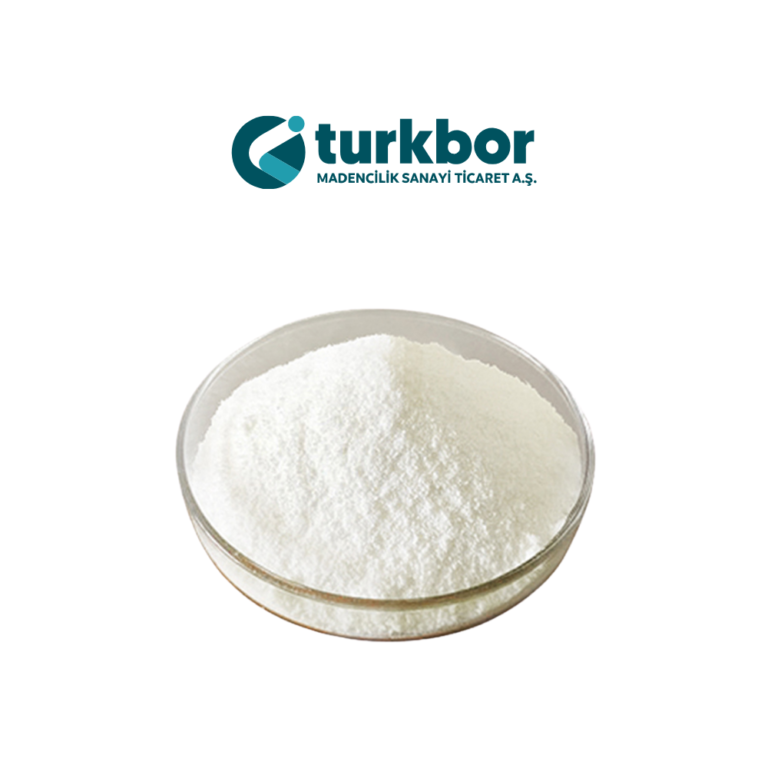
Boron Nitride is a compound formed by the elements of Boron and Nitrogen, with a chemical formula of BN, produced by chemical methods.
Boron Nitride is an inorganic material with low reactivity and many applications. It is one of the hardest man-made materials.
Due to its wide array of material properties such as thermal, electrical, mechanical and physical properties, it has many applications. It includes a wide variety of combinations of these attributes to be used with different applications. Materials engineers have found in boron nitride the unusual combination of electrical insulativity, high thermal conductivity, in addition to an excellent thermal shock property useful in a wide variety of electronic and electrical applications.
Boron Nitride has three different crystal forms; hexagonal form (h) BN, cubic form (c) BN. The third-commercial Boron Nitride type is Pyrolytic Boron Nitride produced by chemical vapor reduction. They have very different physical properties and are used in many different applications.
Boron Nitride Usage Areas



- It is used as a coating on surfaces in contact with hot and molten metals. Boron nitride coating prevents corrosion and chemical reaction of the material. Therefore, it is used for coating the surface of the molds.
- It is also used in the glass and plastic industry for the same purposes. Boron nitride coatings in composite production prevent the mold from oxidizing.
- It is used as a lubricant at high temperatures.
- Used in applications where high thermal shock resistance and high toughness are required (including crucibles and refractory lining applications).
- Due to its high dielectric strength, low dielectric constant and high thermal conductivity, it has an area of use as a dielectric material in the electronics and electrotechnical industry.
- Boron nitride is mixed with silicon nitride in certain proportions (60:40, 50:50 or 40:60) and used as a refractory material for nozzle crucible, thermocouple sheath and glass molds.
- It is used in composite production with other ceramic materials. (For example; Al2O3 / BN, AlN / BN, 3Al2O3.2SiO2.xZrO2 / BN).
- Used in cosmetics industry.
- It is used in the ceramic and glass industry (as a crucible, support, etc.).
- It is used as an antioxidant in the refractory industry.
- It is used in control rods, radiation protection walls in nuclear reactors.
- Used as abrasive in lapping industry.
- It is used as a guide in wire mills.
- Used in extrusion molds.
- It is used in metal matrix composites, low density cermets, aluminum matrix composites.
- Used in solid missile fuels.
- Used in surface boring reagents.
- It is used in the production of other borides (TiB2, SiB2, MoB2 etc.).
- h- BN is used as a coating on surfaces that come into contact with hot and molten metals.
- BN coating is also used in the glass and plastic industry for the same purpose.
- BN coatings in composite production prevent the mold from oxidizing.
- It is used as a lubricant at high temperatures.
- It is used in applications where high thermal shock resistance and high toughness are required (crucible, refractory).
- It is used as a dielectric material in the electronics industry.
- CBN is used in cutting tools due to its very high thermal conductivity. Compared to diamond, the most important advantage of c-BN is its very high stability on contact with iron or other metals or at high temperatures in the air.
- Used for processing hardened steels. BN cutting tools are suitable for rapid machining without the use of fluids during machining.
- It is used as cutting tool and abrasive at high temperatures.
- It is used in the processing of parts produced by casting and forging due to its high resistance against mechanical shocks.
It is the hardest material known after diamond. Due to this feature, it is used in cutting and processing hard materials, and also in high temperature cutting and etching processes due to its high thermal conductivity.
Features:
- Unlike diamond, it has high thermal resistance and is resistant to very high temperatures. (13700C)
- It has a very high thermal conductivity like diamond.
- It has high resistance to mechanical shocks.
Usage Areas:
- It is used in cutting tools due to its very high thermal conductivity. Unlike diamond, it has high thermal resistance and is resistant to very high temperatures (up to 1370 ° C). Compared to diamond, the most important advantage of cubic Boron Nitride is its very high stability in contact with iron or other metals or at high temperatures in the air. Combined with ferro materials with reaction resistance and excellent abrasive resistance, c (BN) is used for machining hard materials at higher temperatures and higher speeds than other tool materials.
- Used for processing hardened steels. Boron Nitride cutting tools are suitable for very high speed processing without the use of liquid during processing.
- It is used as cutting tool and abrasive at high temperatures.
- It is used in the processing of parts produced by casting and forging due to its high resistance to mechanical shocks.
- It is used as an abrasive material (it is used in the abrasive of ferrous metals by adding small crystals into abrasive discs). Due to its high hardness and resistance to high temperatures, the parts made of cubic boron nitride have high strength and long life. In addition, its high thermal conductivity is an advantage in that the heat generated while being used as an abrasive disc can be easily removed.
- Used for grinding, processing and polishing iron-based materials harder than 50 HRc and cobalt and nickel-based materials with a hardness higher than 35 HRc.
Cubic Boron Nitride

Pyrolytic Boron Nitride
The usage areas of Pyrolytic Boron Nitride partially overlap with hot compressed Boron Nitride. Therefore, it can be used in crucibles and furnace parts. It is suitable for the coating of various types of mold shapes and containers and for the production of hot nozzles. Heat shields, heat insulation of electrical cables, induction heating coil carriers, electrical resistances and high temperature capacitors, infrared glass and clarizers can also be produced from pyrolytic boron nitride.


